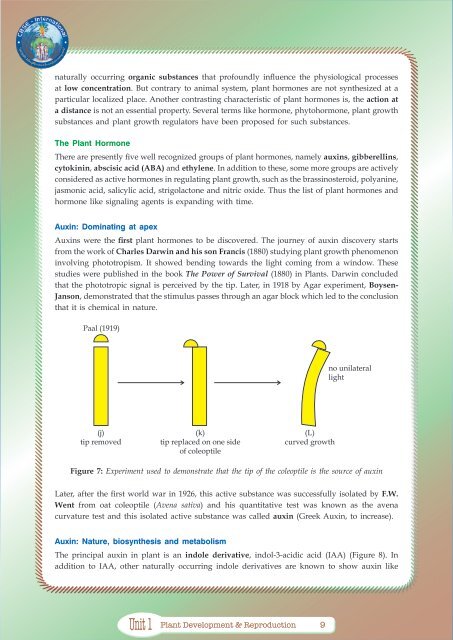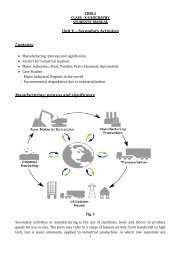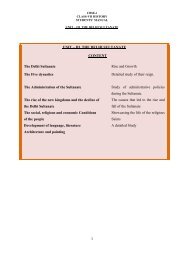PLANT DEVELOPMENT & REPRODUCTION - CBSE International
PLANT DEVELOPMENT & REPRODUCTION - CBSE International
PLANT DEVELOPMENT & REPRODUCTION - CBSE International
You also want an ePaper? Increase the reach of your titles
YUMPU automatically turns print PDFs into web optimized ePapers that Google loves.
naturally occurring organic substances that profoundly influence the physiological processesat low concentration. But contrary to animal system, plant hormones are not synthesized at aparticular localized place. Another contrasting characteristic of plant hormones is, the action ata distance is not an essential property. Several terms like hormone, phytohormone, plant growthsubstances and plant growth regulators have been proposed for such substances.The Plant HormoneThere are presently five well recognized groups of plant hormones, namely auxins, gibberellins,cytokinin, abscisic acid (ABA) and ethylene. In addition to these, some more groups are activelyconsidered as active hormones in regulating plant growth, such as the brassinosteroid, polyanine,jasmonic acid, salicylic acid, strigolactone and nitric oxide. Thus the list of plant hormones andhormone like signaling agents is expanding with time.Auxin: Dominating at apexAuxins were the first plant hormones to be discovered. The journey of auxin discovery startsfrom the work of Charles Darwin and his son Francis (1880) studying plant growth phenomenoninvolving phototropism. It showed bending towards the light coming from a window. Thesestudies were published in the book The Power of Survival (1880) in Plants. Darwin concludedthat the phototropic signal is perceived by the tip. Later, in 1918 by Agar experiment, Boysen-Janson, demonstrated that the stimulus passes through an agar block which led to the conclusionthat it is chemical in nature.Paal (1919)no unilaterallight(j)tip removed(k)tip replaced on one sideof coleoptile(L)curved growthFigure 7: Experiment used to demonstrate that the tip of the coleoptile is the source of auxinLater, after the first world war in 1926, this active substance was successfully isolated by F.W.Went from oat coleoptile (Avena sativa) and his quantitative test was known as the avenacurvature test and this isolated active substance was called auxin (Greek Auxin, to increase).Auxin: Nature, biosynthesis and metabolismThe principal auxin in plant is an indole derivative, indol-3-acidic acid (IAA) (Figure 8). Inaddition to IAA, other naturally occurring indole derivatives are known to show auxin likeUnit 1 Plant Development & Reproduction 9








